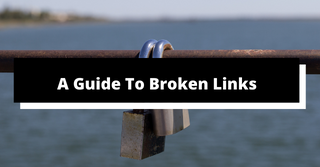We all know that broken links are really bad for the user experience. This is also the reason why broken links also hamper your search engine rankings. If you have broken links on your website or web pages, it is going to negatively impact the SEO rankings.
So, if you want to improve your search engine ranking, you must fix all those broken links. Here, in this article, we will guide you on how to find and fix broken links in WordPress.
Before heading towards the main topic, let’s get a basic understanding of what broken links actually are.
What Is A Broken Link?
A broken link or dead link is nothing but a simple link that does not work anymore. For a number of reasons, broken links can happen. However, the major reason is when a particular page is either moved to a different location or deleted.
So, when you open the link, the server will show a 404 not found error.
The scenario is a little different for WordPress sites. Here, a broken link occurs when the website has been moved to a new domain name when the post is deleted or the page does not have proper redirection.
How To Find Broken Links In WordPress?
Finding a broken link is indeed a hectic task. You can not open each and every webpage, each post when you have placed a link, and then check all the links to find broken links. A number of tools are available in the market for finding broken links.
To get them free, click here.
Here are some of the tools that can help you in finding broken links on WordPress.
- Google Search Console.
- Ahrefs.
- SEMRush.
- MonsterInsights.
- Broken Link Checker Plugin.
Fix Broken Links In WordPress
Once you are done finding all the broken links in WordPress, it is time to fix them. The best way of fixing a broken link is to redirect it to some other page.
Such as, in case you have shifted an article to a different address, then you will need to redirect the link to a newer article.
In the same way, in case the article does not exist anymore, you are required to redirect the user to another content page that is almost similar to the old one. By setting up 301 redirects, you will be able to do it.
You can use an AIO SEO or all in one SEO plugin for WordPress to fix the broken links really easily. With the powerful redirection manager, you will be able to track 404 error pages along with creating 301 redirects.
- You just need to install the ALl in One SEO redirects and click on the ‘Active Redirects’ option.
- After that, go to the ‘Settings’ tab that is located under the Redirects, and from there enable 404 logs. In the ‘Logs’ section, you will find the option.
- Using the dropdown menu, you will also be able to set a particular time in order to record your 404 logs.
- For smooth and optimal performance, we will suggest you set the time for more than at least a month.
- Now click on the ‘Save Changes’ button.
- In the Redirects section in AIO SEO, now you will see a ‘404 Logs’ tab. Click on the tab.
- You will not find any data on the page when you first enable the 404 logs. Once you have enabled the settings, the plugin will start to monitor and also record the 404 pages.
- Just after it gets active, you will get a list of all the broken links that your website has. You will find that under the URL column.
- Under the ‘Hits’ column, it will show how many people have visited the link along with the last accessed date.
- You just need to enter the target URL to which you want to redirect the broken link.
- As the redirection type, you need to select 301 Moved Permanently.
- Now click the ‘Add Redirect’ button.
Now you are all set. You can test by visiting the link that was broken. It will redirect you to the new page that you have directed there.
